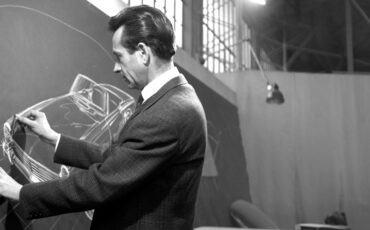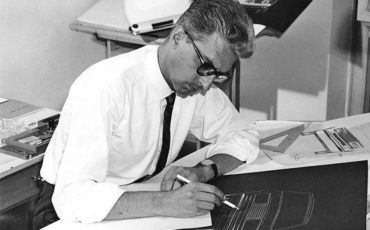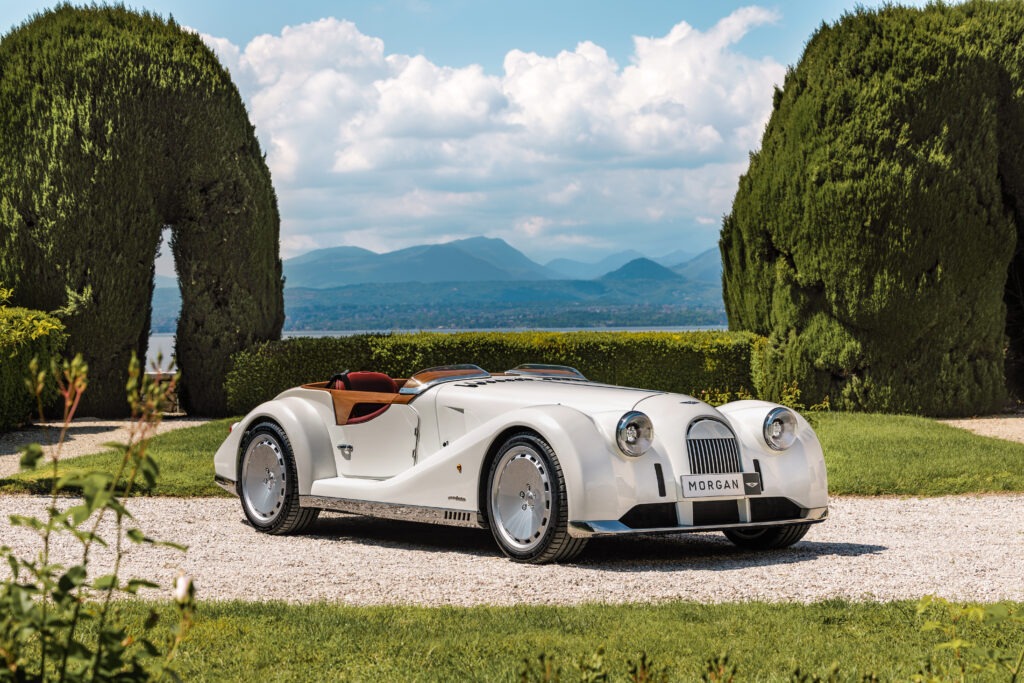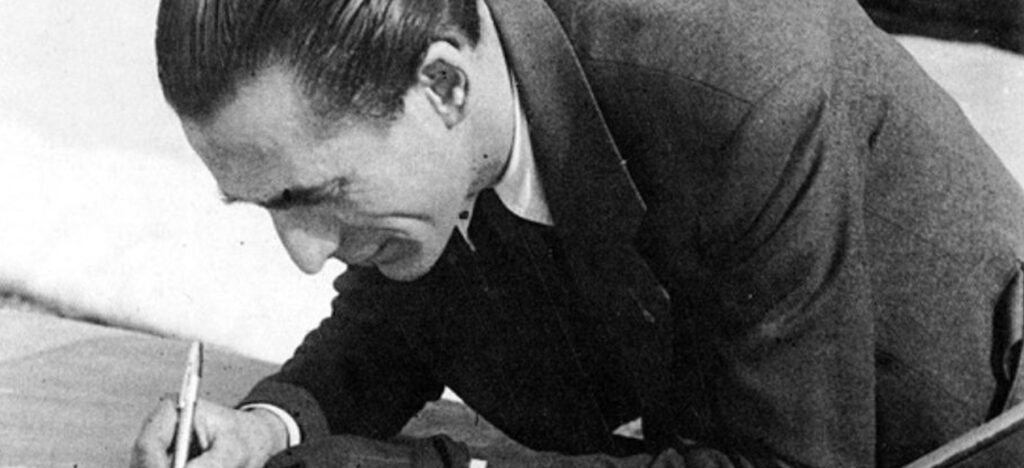
Giovanni Savonuzzi was an industrious researcher, exploring various solutions and concepts. As an engineer, he possessed the ability to harmoniously blend design and style, technological advancements, and creative ingenuity. He was a renowned designer of global significance, bridging the gap between two distinct realms. On one hand, he greatly admired the practicality and pragmatism of the American world, while on the other, he remained deeply connected to his Italian heritage, creating his most exquisite and renowned works for his native land.
The early years
After his father Ezio’s death in World War I, Giovanni Savonuzzi, who had completed his mechanical engineering degree at the Turin Polytechnic, found employment at Fiat Aviazione. His role involved conducting research and experiments in the fields of aerodynamics and turbine engines. When the Armistice of Cassibile was declared and the Italian Social Republic was proclaimed, Savonuzzi, along with numerous other FIAT technicians and managers, was recruited by the U.S. Office of Strategic Services. Their mission was to gather information and relay orders to the Allies and partisan groups. Tragically, Giovanni’s younger brother Alberto, who was an anti-fascist lawyer, was killed by the Nazis in the Caffè del Doro massacre in Ferrara on November 17, 1944.
Cisitalia
After the conclusion of the war, Savonuzzi was recruited by Piero Dusio to serve as the technical director for the newly established Cisitalia. This presented him with a valuable chance to enhance his expertise by engaging in discussions and working alongside notable figures in the automotive industry, including Dante Giacosa, Piero Taruffi, Ferry Porsche, Tazio Nuvolari, Rudolf Hruska, Carlo Abarth, and other exceptional technicians.
Savonuzzi’s initial venture involved collaborating with Giacosa and Taruffi on the creation of the “D46” prototype. This open-wheel single-seater featured a sleek tubular chassis and an engine sourced from the Fiat 1100, which was extensively modified to increase its power output twofold. Savonuzzi vehemently objected to utilizing an engine derived from a mass-produced vehicle for a racing car, instead advocating for the development of a brand new engine that he had already designed and executed.
Piero Dusio, on the other hand, disregarded the counsel of his director and instead pursued more ambitious investment strategies that revolved around the inaugural participation of the newly established Formula A, later rebranded as Formula 1, in the Grand Prix. As a matter of fact, several months down the line, Savonuzzi discovered that he was enlisted in a prominent and esteemed Italian-Austrian technical consortium, meticulously assembled by Dusio, with the purpose of constructing the Cisitalia 360 Grand Prix.
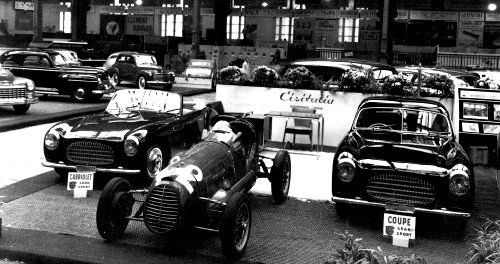
Savonuzzi’s masterpiece at Cisitalia is the “202” model, which is a road version of the “D46” car. It is widely regarded as one of the most beautiful cars of all time and has been showcased as a prime example of “sculpture in motion” at the Museum of Modern Art in New York since its inception. The creation of the “202” involved the collaboration of various individuals, but Savonuzzi played a crucial role in both its technical and aesthetic design. Working alongside Giacosa, he crafted the car’s innovative structure and sought input from Alfredo Vignale and Battista Farina for its visual appeal. The “202” introduced a significant stylistic breakthrough in car design, featuring a lower hood compared to the front fenders and a seamless surface extending from the passenger compartment to the tail. These groundbreaking design elements influenced the silhouettes of other highly successful models like the Lancia Aurelia B20 and the Alfa Romeo Giulietta Sprint.
He worked on several other projects for Cisitalia such as the 303 DF (the 202’s smaller sister) bodied by Stabilimenti Farina and Pininfarina. Later before joining Ghia, he designed the one-off Aston Martin DB2/4 Coupe for Allemano, which was one of the few projects not signed by Giovanni Michelotti for the Turin coachbuilder.
The exorbitant costs associated with the “360 Grand Prix” project ultimately led to Cisitalia’s financial downfall. As a result, Savonuzzi made the decision to establish his own automobile company, partnering with the skilled driver Virgilio Conrero. Their bond of friendship and professional respect, which had developed during their time at FIAT, prompted them to form the SVA (Società Valdostana Automobili) in Pont-Saint-Martin. This venture operated from 1948 to 1951 and managed to produce a Formula 1 car. Although the car performed poorly, it showcased a remarkably low weight of 375 kilograms and featured a small 820-cfm four-cylinder engine, which was supercharged with a vane turbocharger. These innovative characteristics foreshadowed the future Formula 1 single-seaters that would emerge three decades later.
Carrozzeria Ghia
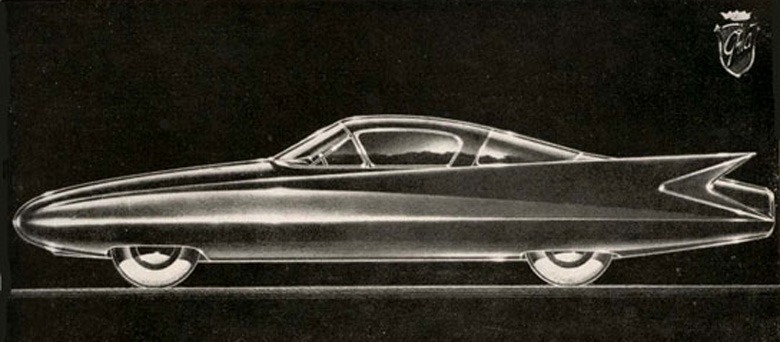
Savonuzzi started his collaboration with Carrozzeria Ghia after the unsatisfactory encounter at SVA. In 1954, Luigi Segre, the new owner and a former comrade during the Resistance, summoned him to assume the role of general manager, succeeding Mario Boano. Giovanni Savonuzzi effectively fulfilled this position for a duration of three years.
During this period, Ghia dedicated themselves to a period of extensive labor, resulting in the creation of numerous prototypes and show-cars for both Italian and foreign companies, with a particular focus on those from the United States. Notably renowned was the “Gilda” conceptcar, along with the sophisticated coupe line named “Supersonic.” These designs featured tubular chassis and were skillfully adapted to fit various models such as the Aston Martin DB2/4, DeSoto Adventurer II, Jaguar XK120, Fiat 8V, and Alfa Romeo 1900 chassis.
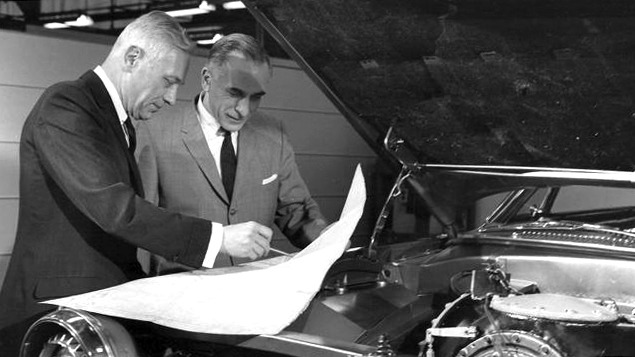
In addition to these projects, also during his time at Ghia, Giovanni Savonuzzi worked on the Chrysler Turbine Car with american designer Elwood Engel. Additionally, he showcased his creative prowess by designing numerous vehicles for American brands as part of Ghia’s long-term collaboration agreement. Notable examples include the Plymouth Explorer Special and the Chrysler 400 Superdart created in collaboration with designer Virgil Exner. His American-style design imprint was also carried over to Italian chassis such as the Alfa Romeo 1900C Super Sprint built in two limited series, the Ferrari 410 Superamerica one-off and the Ghia Nibbio II powered by Moto Guzzi.
from the U.S. back to Italy
In 1957, Savonuzzi was recruited by Chrysler and relocated to the United States. During his time there, he focused on designing and experimenting with various prototypes of cars equipped with turbine engines. This innovative solution was considered by many automakers at the time to be the future of the automobile industry. Returning to his home country, Dante Giacosa invited him in 1969 to lead the Fiat Research Center in Orbassano. In his final years at FIAT, Savonuzzi dedicated himself to training a group of technical experts in fuel and exhaust systems for both conventional engines and alternative powertrains. Their goal was to continuously reduce harmful and polluting emissions. After retiring in 1977, Savonuzzi turned his attention to teaching as a lecturer in Mechanical Engineering at the Turin Polytechnic.
Tragically, Giovanni Savonuzzi passed away in Turin on February 18, 1987, leaving behind his wife Rina and his daughters Giovanna and Alberta.

